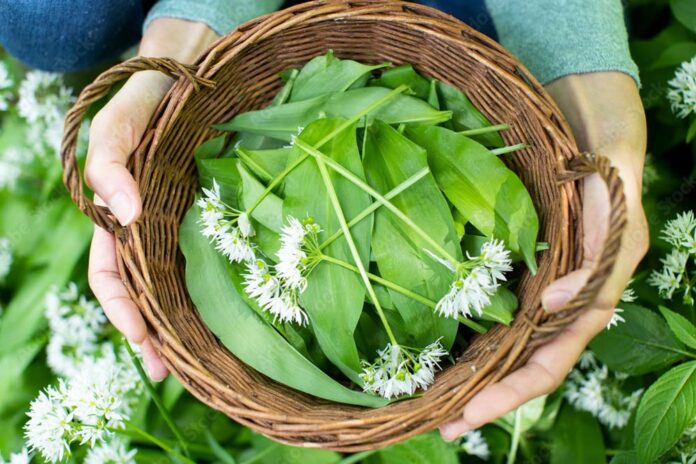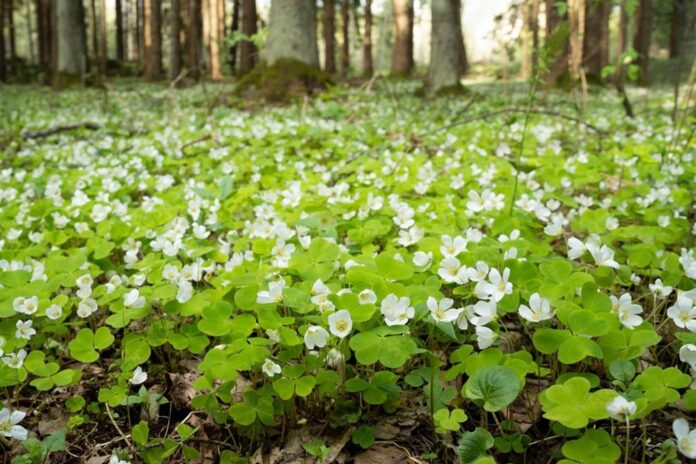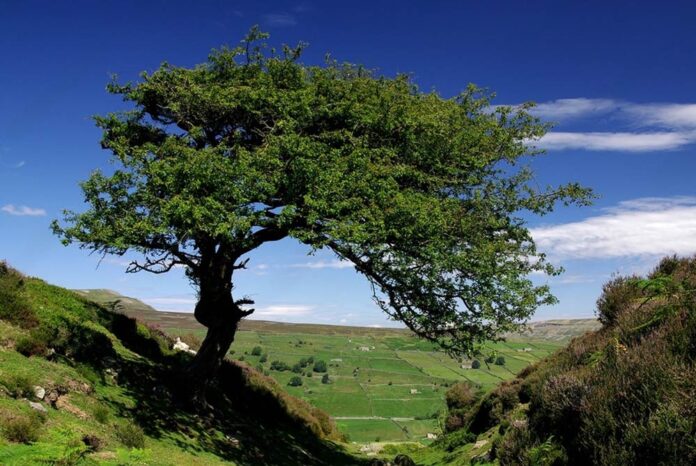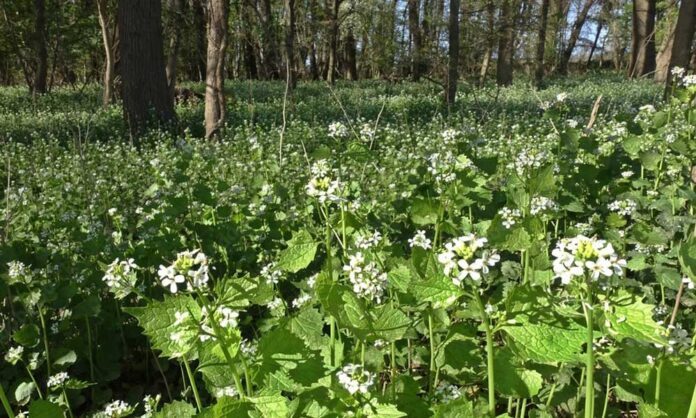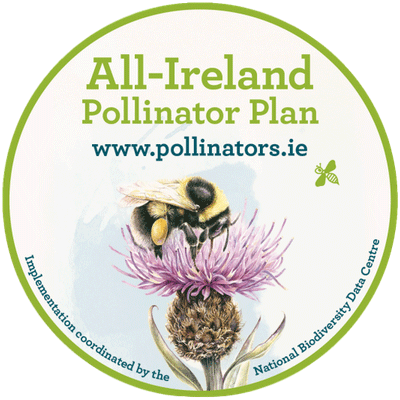Venture out from the manicured lawns and into the wild embrace of the surrounding landscape. There, amidst the golden hues of summer or the stark beauty of winter, you’ll encounter a shrub adorned with both thorns and a profusion of sunshine-yellow blossoms – the gorse, furze, or whin (Ulex europaeus) depending on how you know it. This resilient Irish native shrub isn’t just visually striking; it’s steeped in folklore, symbolism, and ecological importance.
A Thorn by Any Other Name: The Many Faces of Gorse
The gorse is a captivating sight throughout the year. In spring, its branches erupt in a vibrant display of pea-like flowers, each boasting a golden hue that rivals the summer sun. These blossoms not only add a splash of colour to the landscape but also boast a delightful coconut-like fragrance, a pleasant surprise for the unsuspecting wanderer.
As summer progresses, the flowers give way to clusters of tiny green pods, which eventually mature into dark brown, almost black, seedpods. But beware – the gorse’s beauty is not without its defences. Its branches are armed with sharp, green thorns, a reminder of the plant’s resilience and its ability to protect itself from herbivores.
A Legacy of Legends: Folklore and Symbolism
The gorse’s association with humanity stretches back centuries. Celtic cultures revered it as a sacred plant, associated with fire and the sun. Legends abound of gorse bushes marking ancient boundaries or standing guard over sacred places. In some cultures, the prickly gorse symbolized protection, while its vibrant blooms represented hope and renewal. The saying “When gorse is out of bloom, kissing’s out of fashion” reminds us of the plant’s seemingly endless flowering season, a testament to its enduring spirit.
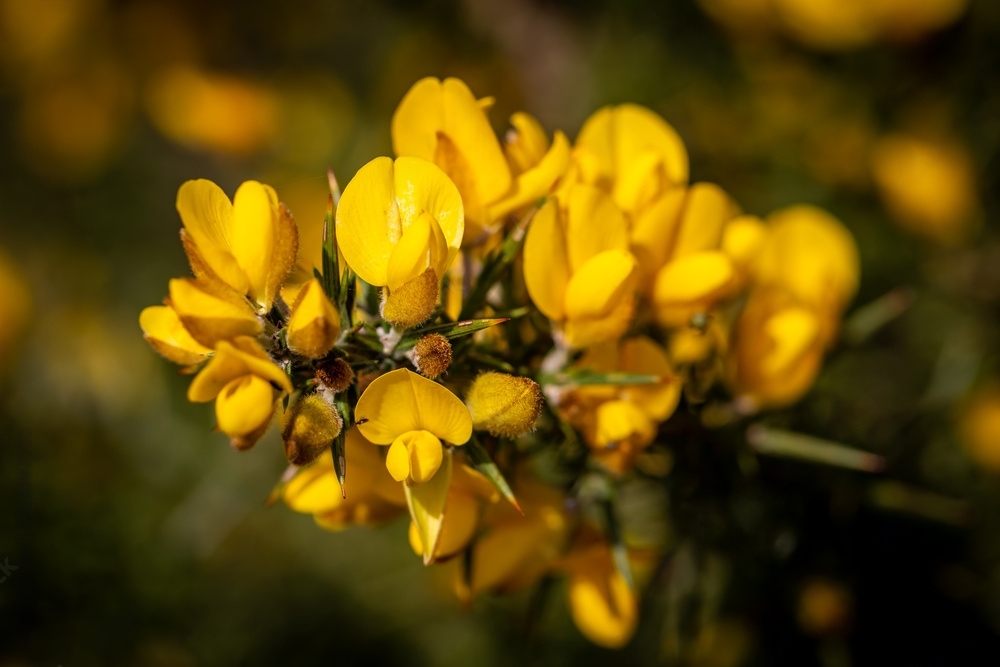
A Haven for Wildlife: The Ecological Importance of Gorse
The gorse isn’t just beautiful; it plays a vital role in the ecosystem. Its dense, thorny branches provide a haven for nesting birds, such as robins, wrens, and chats. The intricate network of branches and twigs creates a protective maze where fledglings can learn to fly and take shelter from predators.
Gorse berries offer a valuable food source for many creatures, from thrushes and fieldfares to foxes and badgers. In late summer and autumn, the hedgerows bustle with activity as birds and mammals feast on the bounty of the gorse. The gorse’s flowers also attract a multitude of pollinators, including bees and butterflies. These tiny creatures flit from blossom to blossom, collecting pollen and ensuring the continued health and productivity of the surrounding plant life.
Beyond Folklore: Exploring Culinary and Medicinal Uses
While the medicinal properties of gorse are not universally recognized by modern medicine, its flowers and seeds have been used in traditional herbal remedies for centuries. Gorse tea, made from dried flowers and leaves, is said to support heart health, although scientific evidence is limited. It’s important to consult with a qualified herbalist before using gorse for medicinal purposes, as it can interact with certain medications.
The ripe gorse berries, however, offer a unique culinary opportunity. With a flavour profile that is both sweet and slightly bitter, they can be transformed into jams, jellies, additions to salads and even alcoholic beverages. Foraging for ripe gorse berries can be a rewarding experience, but caution is advised. Only consume fully ripe berries – unripe berries can cause stomach upset. When gathering berries, be mindful of your surroundings and avoid picking from areas that may have been sprayed with pesticides. Perhaps the most surprising use for gorse is in the realm of homemade wines.
A Golden Goblet: Gorse Wine – A Local Libation
Gorse flowers can be used to create a beautiful, golden-hued wine with a unique flavour profile. While the process requires patience and attention to detail, the reward is a homemade liqueur that captures the essence of the sunny gorse blooms. Remember, it’s crucial to harvest gorse flowers from unsprayed areas and to follow a reputable recipe to ensure safe consumption.
A Symbol of Resilience: The Enduring Presence of Gorse
Whether you call it gorse, furze, or whin, this remarkable shrub stands as a testament to the enduring spirit of the natural world. Its vibrant blooms offer a promise of sunshine even in the depths of winter, while its spiny armour ensures its survival. The gorse provides a haven for wildlife, a source of sustenance, and a connection to the rich folklore of Ireland. So, the next time you encounter this sun-kissed shrub on your explorations, take a moment to appreciate its many names, its enduring presence in the landscape, and the surprising


